When planning for your marketing efforts, it is important for you to be guided by a document that can present a concrete and concise list of your plans of…
continue reading49+ B2B Marketing Samples
The following are different forms of B2B marketing samples in PDF and Word files.
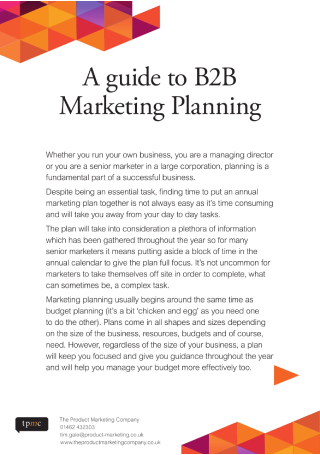
A Guide to B2B Marketing Planning
Find out how you can put an annual B2B marketing plan together with this sample.

B2B Content Marketing
Learn the basics of B2B content marketing through the sample provided.
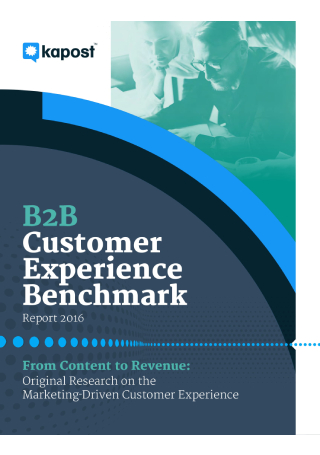
B2B Customer Experience Benchmark Report
Create a marketing-driven customer experience for your business through this report.

B2B Digital Marketing for SMEs
Develop the best digital marketing strategy for your B2B entreprise through these techniques.

B2B Digital Marketing Plan
Maximize your B2B digital marketing strategy with the perfect plan.

B2B Digital Marketing Trends
Improve your marketing efforts by considering the latest trends in B2B digital marketing.

B2B Event Marketing
Implement the best event marketing strategies for your business through this report.

B2B Influencer Marketing
Make it big by getting started with your B2B influencer marketing campaign.
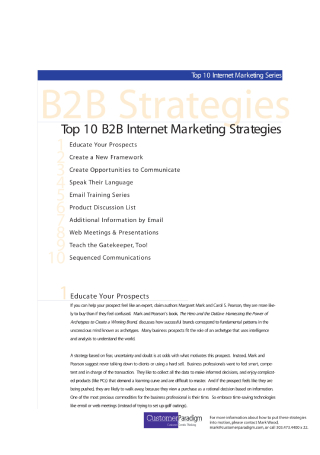
B2B Internet Marketing Strategies
Take a look at the different B2B internet marketing strategies you can utilize for your business.

B2B Marketer’s Guide to Customer Insights
Learn the strategies to help maximize your B2B marketing efforts using this guide.

B2B Marketer’s Guide to Social Media
Achieve social media success by learning the tactics of B2B marketing.
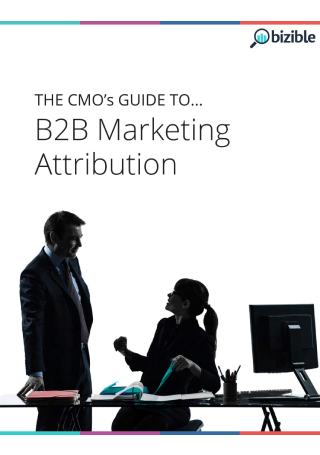
B2B Marketing Attribution
Understand the principles of B2B marketing attribution using this sample.
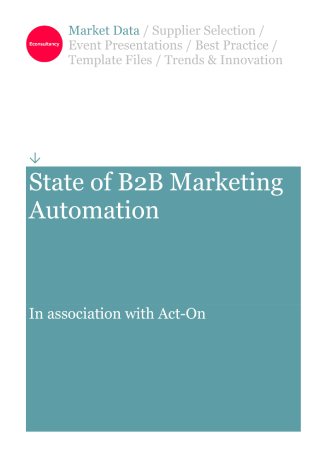
B2B Marketing Automation
Enhance your B2B marketing campaigns by automating your efforts.

B2B Marketing Benchmark Report
Attract and convert B2B leads with the help of these report findings.
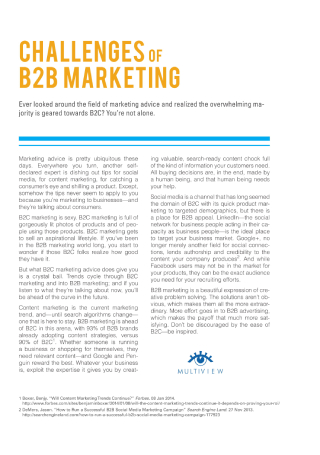
B2B Marketing Challenges
Uncover the biggest challenges faced by B2B marketers through this sample.
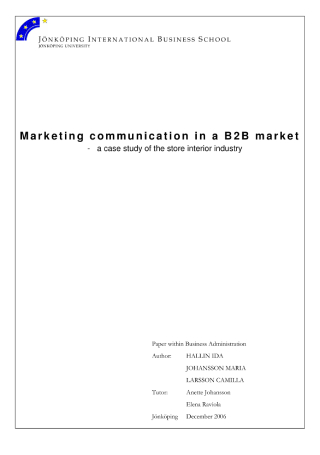
B2B Marketing Communication
Connect with new and existing customers using the perfect B2B marketing strategy.
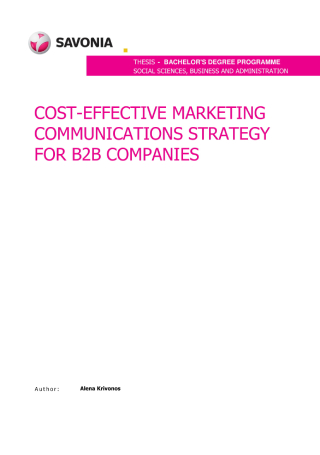
B2B Marketing Communications Strategy
Stay one step ahead of competitors with a cost-effective B2B communications strategy.

B2B Marketing Content Consumption Report
Gather data regarding B2B content consumption and demand through this sample.
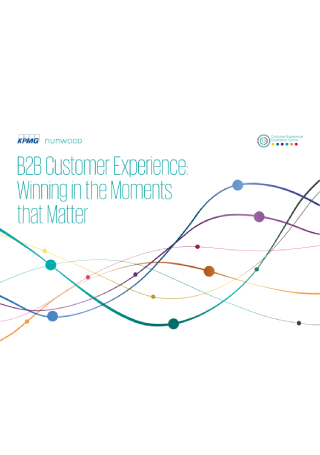
B2B Marketing Customer Experience
Unlock the full potential of your B2B marketing efforts for a successful customer experience.

B2B Marketing Data Management
Discover how B2B organizations manage their marketing data in this report.

B2B Marketing Data Report
Better understand the importance of data in B2B marketing through this report.
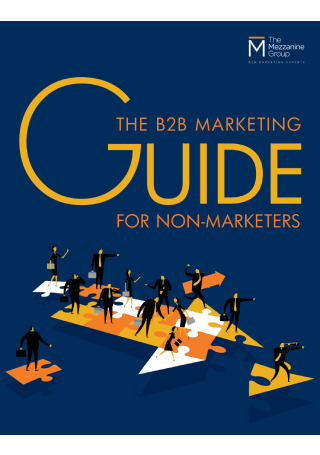
B2B Marketing Guide for Non-Marketers
Refer to this guide to learn the basic principles of B2B marketing.

B2B Marketing in Social Media
Understand the role of social media in B2B lead generation through this sample.
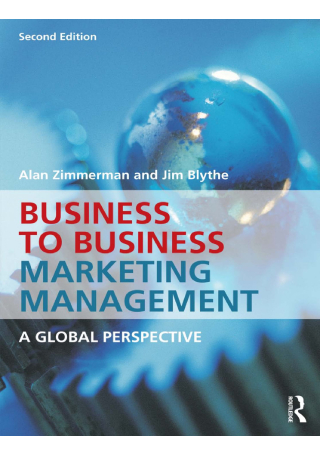
B2B Marketing Management
Better communicate with customers through effective B2B marketing management.

B2B Marketing Mix Report
Look into the trends and tactics that B2B professionals care about with this report.
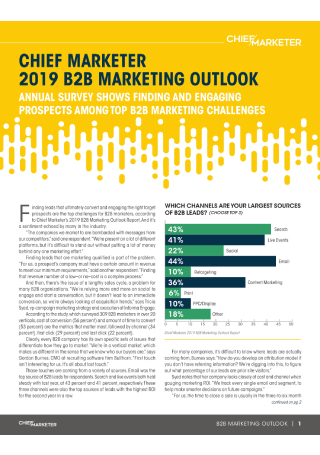
B2B Marketing Outlook Survey
Examine the biggest opportunities and challenges of B2B marketers through this sample.
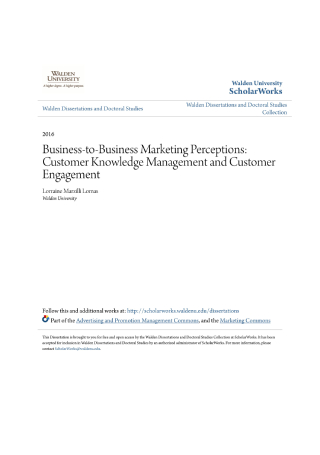
B2B Marketing Perceptions
Analyze the different perceptions of B2B marketing in this sample.

B2B Marketing Research Report
Study the key trends emerging in B2B marketing through this research report.
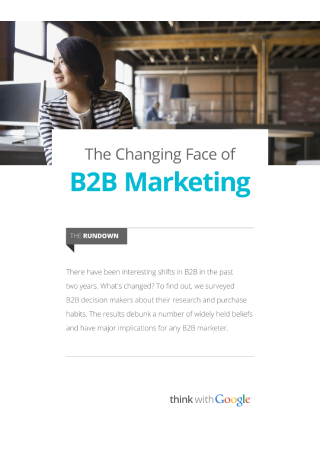
B2B Marketing Research Survey
Gather reliable data about B2B marketing through a research survey.

B2B Marketing Survey
Gain marketing insights by analyzing the results of your B2B marketing survey.

B2B Marketing Trends and Insights
Look into the trends and insights surrounding B2B marketing with this sample.

B2B Marketing Web Usability Report
Discover the usability guidelines for good B2B web designs using the report provided.

B2B Social Media Marketing
Garner success with your B2B social media marketing campaign with the help of this report.

B2B Video Marketing
Find the right approach for your B2B video marketing campaign using this sample.
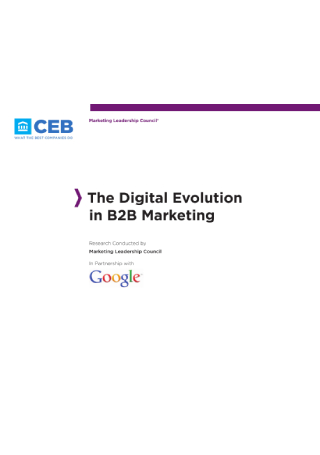
Digital Evolution in B2B Marketing
Download this sample to read about the digital evolution in B2B marketing.

Digital Marketing Plan for B2B
Build relationships and drive leads with a digital marketing plan for your B2B enterprise.
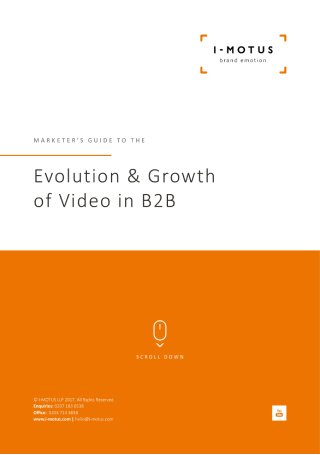
Evolution and Growth of Video in B2B Marketing
Understand the role of video in B2B marketing by reading this sample.

Guide to Successful Digital B2B Marketing
Execute a successful digital campaign for your B2B marketing efforts through this guide.
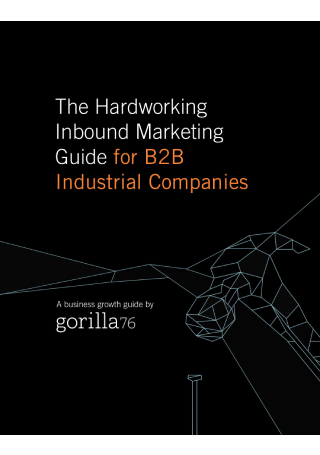
Inbound Marketing for B2B
Help business customers find your company by performing B2B inbound marketing.
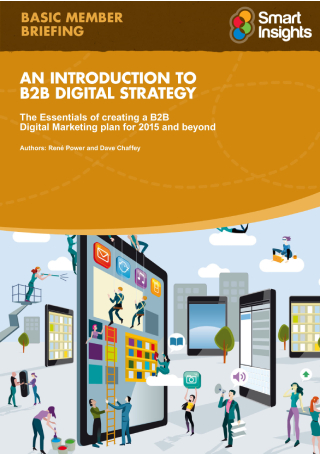
Introduction to B2B Digital Marketing
See how you can exploit digital marketing assets and tools for your B2B.

Megatrends in B2B Marketing
Invest in the right innovations and solutions by exploring the megatrends in B2B marketing.
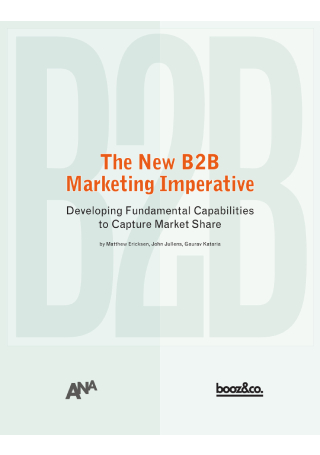
New B2B Marketing Imperative
Simplify a customer’s purchasing journey with these B2B marketing imperatives.
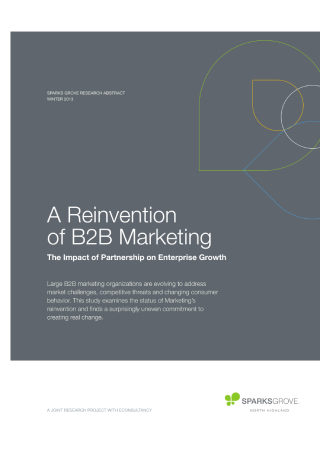
Reinvention of B2B Marketing
Reinvent your B2B marketing strategies with the help of this sample.
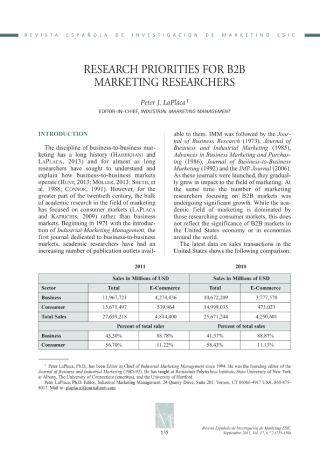
Research Priorities for B2B Marketing
Find out what to prioritize in your B2B marketing research efforts through this sample.
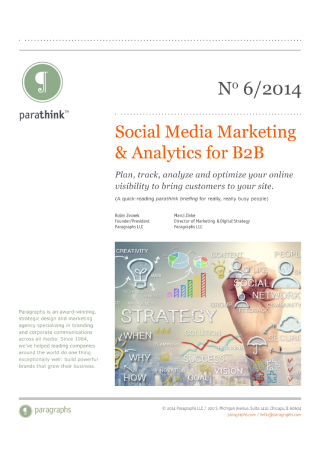
Social Media Marketing and Analytics for B2B
Bring customers to your website by optimizing your online visibiliy with the help of this sample.
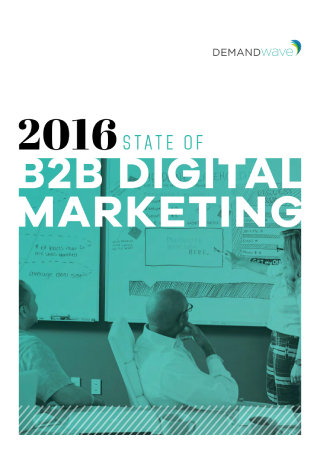
State of B2B Digital Marketing
Generate leads by implementing the right B2B digital marketing strategy for your business.
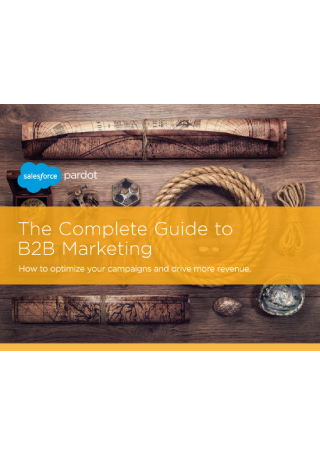
The Complete Guide to B2B Marketing
Refer to this guide to help kick-start your B2B marketing campaign.

The New B2B Marketing Playbook
Revamp your approach toward customer management with this B2B marketing playbook.
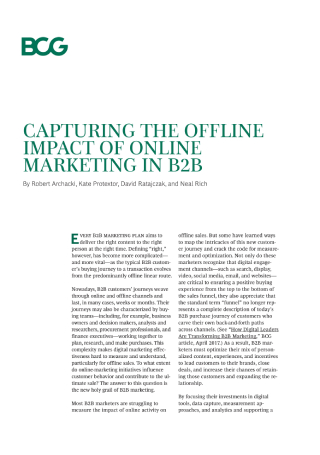
The Offline Impact of Online Marketing in B2B
Measure the offline impact of B2B marketing through this sample.

Website Optimization Benchmarks for B2B Marketing
Overcome the obstacles in B2B marketing with the help of the tactics provided.
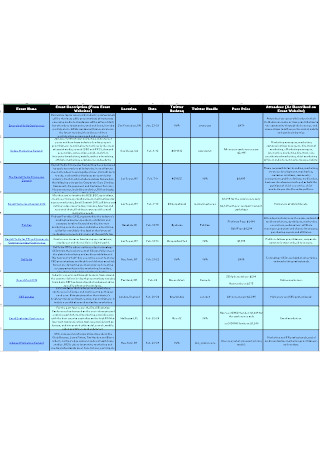
B2B Sales Marketing
download now
What Is Business-to-Business Marketing?
Business-to-business marketing, as the name suggests, refers to the process of marketing products or services to another company or organization. Companies that fall under the B2B umbrella often specialize in software-as-a-service (SaaS) subscriptions, office supplies, security solutions, construction equipment, building tools, and many more. B2B marketers generally focus their strategies on larger consumer categories, such as government agencies, healthcare institutions, schools, and wholesalers. While consumers in B2C markets choose products based on the price, popularity, and status of the item, B2B buyers rely on the price and profit potential of the product to make their decision.
But marketing success for B2B companies doesn’t come from one’s ability to broadcast products and services through various channels, as B2B marketing centers on a company’s capacity to embed itself in the industry and stay on top of a target buyer’s mind. What makes B2B marketing different from consumer marketing is the way these strategies are executed. Finding new ways to drive customer relationships has always been a priority that marketers strive to achieve, which explains why social media has become a huge part of the marketing world.
Why Is It Important?
At its core, B2B marketing helps build valuable relationships between parties to secure lasting customers for a business to survive in a highly competitive industry. B2B buyers are also known for being more rational compared to their consumer counterparts, which makes it a lot more difficult to generate leads. They know what they want and what they need to get an ROI. Trust and security are two major issues that make it hard for a B2B enterprise to sell its products and services to a buyer. The decision-making unit of a company can be very fastidious when they need to be, which requires the conveyance of reliability and consistency from a seller’s end to ensure that B2B buyers get their money’s worth.
Unlike B2C companies, the number of buying units in B2B markets is fairly limited as well. Even the largest business-to-business companies are likely to have a hundred customers (or less) in the international market that can make a difference to their sales volume. Customer relationship management is critical to make sure that key accounts are taken care of and that important records of the DMU remain updated for future transactions and possible partnerships for affiliate marketing. That way, your company can cultivate customer and business relationships that guarantee longer-term buyers and higher revenue.
How to Achieve B2B Marketing Success
The world of B2B is rapidly changing. This makes it difficult for companies to strategize on a campaign that will generate stellar results. But with so many advertising and selling options to invest in, knowing what to devote your time and attention to can be a struggle. In an increasingly noisy space, it’s important to make marketing decisions that conform to corporate standards and consumer demands. To help you out, here are a few tips to get you started on a winning B2B marketing plan.
Step 1: Identify Your Goals and Create Milestones
Goals create a path that leads you toward a destination, while milestones are the steps taken to reach that destination. Marketers often fail to recognize the importance of the journey itself rather than what’s at the end of it. This leads to poor marketing management and excessive loss down the road. It’s a mistake that many marketers have fallen victim to after entering the battlefield completely blindfolded.
Thus, setting smaller goals that are smart, measurable, attainable, realistic, and time-bound is one way to develop a solid strategy for B2B companies of all sizes. By doing so, you can assess the points that were successful and those that require improvement as you enter another milestone in the sales funnel. This will also encourage you to continuously improve your marketing efforts for your B2B enterprise to flourish.
Step 2: Focus on CRO.
Search Engine Optimization (SEO) is still an important part of marketing, but if you haven’t been incorporating Conversion Rate Optimization (CRO) to your strategy, now is the time to do so. While SEO drives attention to your brand online, CRO draws customers into the pipeline. That’s because increasing your conversion rates can bring a better return on investment for B2B companies. CRO thrives in the B2B space due to the length of its sales cycle and the amount of work it requires to convert leads into customers.
You see, B2B buyers are often the most difficult to persuade, as products or services are offered at a much higher price point. This means that customers will be very picky with their purchases, making it harder to establish your selling proposition in a way that will satisfy what they are looking for in a product or service. Hence, moving your customers through the sales funnel won’t be easy. Calls-to-action, graphics, usability, and navigation are just some elements that make up a good CRO strategy.
Step 3: Boost Visibility and Market Reach
In the past years, marketers have slowly shifted from traditional advertising to a more modern approach that we’re all too familiar with: digital marketing. This signals the new era of B2B marketing that has not only changed the market of B2B buyers but the buying process as well.
A 2010 study by The Realtime Report shows that about 86% of B2B companies maintain their social media presence through blogging. A recent survey by Hubspot supports the accuracy of these facts after over 40% of online customers admit to skim over blog posts from time to time. This number is likely much higher by now, given the widespread use of digital devices. Blogging, in whatever form, can help educate your audience in better understanding what you offer.
A great way to extend the shelf life of your content is to reuse and rebuild previously published information that might be deemed useful to new customers and passing visitors. Upcycling is a common marketing practice that has helped many B2B buyers get the information they need from a company. How-tos and explainer videos are often utilized to elaborate your products and services creatively. You can also obtain similar results by posting videos that recap old articles, publishing infographics, or creating a Slideshare to summarize your content.
Step 4: Prepare a Content Calendar
One of the tactics you can incorporate into the marketing mix is the use of a content calendar. This allows you to oversee your entire content strategy for the period, ensuring that your posts remain relevant and timely to the trends of the season. Planning is essential in marketing for you to discover, analyze, and produce content that matters to your target readers. The last thing you’d want to do is foster a strategy that your competitors have already cultivated months before. This pertains to blogs, social media posts, news articles, email newsletters, case studies, and videos that you release. With the calendar, you can also check what needs to be posted and what content to create to stay ahead of the game.
Step 5 : Keep Your Audience Committed
Notice how YouTube vloggers always encourage their viewers to Like, Subscribe, and Share their content? This makes it easy to stay in touch with your audience and strengthen your online engagement. Your ability to answer questions, address concerns, or solve problems straightaway demonstrates how much you care about every one of your customers. It’s a method that drives a quality customer experience so you can generate better sales and retention rates for your B2B relationships.
Listening to what your audience has to say is also an opportunity for you to dig deeper into your target demographic. You can acquire feedback by employing consumer questionnaires and marketing surveys to build your plan. This is a smart way to unlock incredibly useful data for your B2B marketing strategy.
Step 6: Analyze and Adapt to Changes
Marketing constantly evolves, which is both a good thing and a bad thing for marketers. If you’re not up-to-date with the latest trends, your marketing efforts could fall short and lead you to a state of damage control. It’s not unusual to make mistakes, as even the biggest companies in the world have all had their fair share of disappointments. Fortunately, you can always fix the situation by changing your strategy to better fit your audience. You need to be wary of what happens before a minor marketing bump garners an unwanted buzz. Listen to how your B2B customers are responding and make the necessary adjustments while you still can.
Competing in a complex industry can seem overwhelming, but it’s a challenge that many B2B marketers have managed to conquer on their own. With the right strategies founded by good market intelligence and close attention to the needs of customers, you can optimize trends and market opportunities to not only build a connection with customers but to relish and grow as an entity as well.


